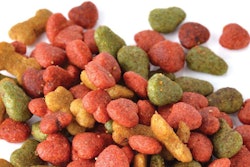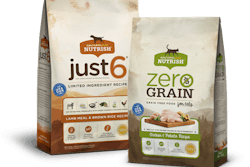
Functional pet treats are growing more popular among pet owners focused on nutrition and wellness. Pet treat manufactures are reaping the benefits of the growing health and nutrition trend. Over the last five years, pet treat sales in the US have outpaced dog and cat food sales, with treats sales increasing 29 percent between 2012–2017 to reach US$4.39 billion, according to recent data from Mintel.
The pet treat category is out-performing the overall pet food market while following many of the same trends, such as “humanization, natural, grain-free, limited ingredient, made in the USA, functional ingredients and exotic proteins,” according to a 2017 report from Research and Markets.
“As in the pet food market, health and wellness concerns are a primary driver, with more and more pet owners turning to functional treats for health conditions that are often age- or weight-related, including joint/mobility, skin/coat and cognitive,” said the Research and Markets report. “Additionally, as the chews segment recovers from the wave of recalls in recent years, consumers are looking for options with simpler and fewer ingredients and demanding transparency when it comes to ingredient sourcing.”
Manufacturers of pet treats, specifically dog treats, are capitalizing on the recent market growth while focusing on sustainability and new marketing techniques to stay up with consumer demands.
Pet humanization fuels functional treat trend
According to a recent survey from Packaged Facts, 70 percent of US consumers say treats with functional benefits play an important role in their pets’ health, and 71 percent look for treats that address health concerns or offer extra nutrition. Pet treat producers have to keep up with this trend while also creating treats that pets will love.


















